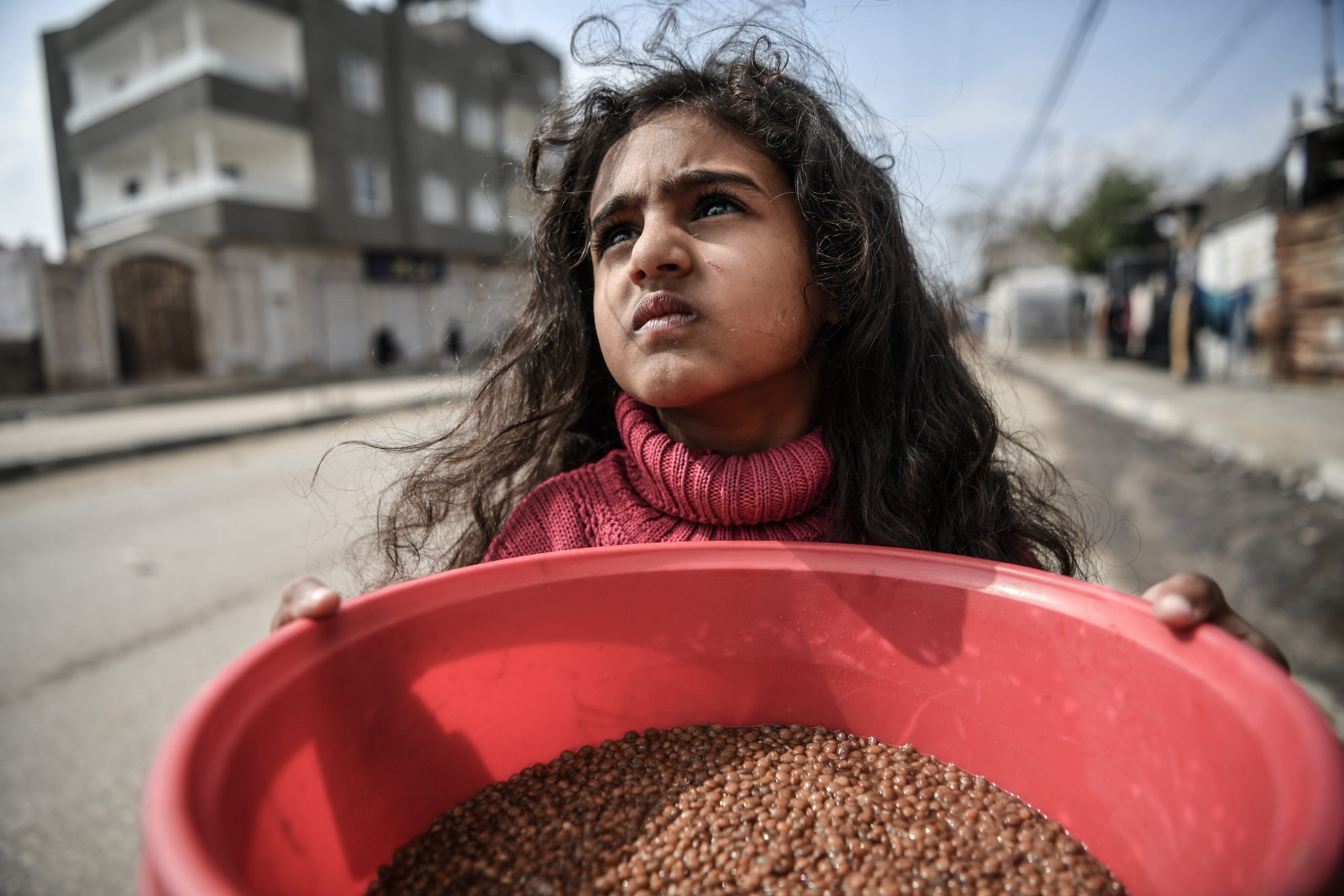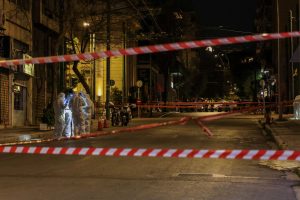Fourteen trucks carrying desperately needed aid from the World Food Program were barreling toward the northern Gaza Strip early Tuesday morning when the Israeli military halted the convoy at a checkpoint for hours and then turned them away.
The Israeli military said it stopped the convoy because the route was too crowded and thus unsafe. After the convoy headed back to the south, thousands of desperate people stopped the trucks and took around 200 tons of food, the agency said.
A vicious cycle is preventing almost any basic aid from reaching Gaza’s devastated north , where Israeli bombardment has reduced urban centers to rubble. After ending Hamas’s control , Israeli ground forces limited the flow of aid north, without providing an alternative civilian authority to restore order and basic services for the quarter to half a million people who refused Israeli orders to move south.
Disaster is brewing, with more than a dozen of the first hunger-related deaths confirmed in the past week by local doctors. Scarcity is driving desperate people to crowd in and seize what aid does get in, sparking violence that deters humanitarian groups and the Israeli military from bringing in more aid.
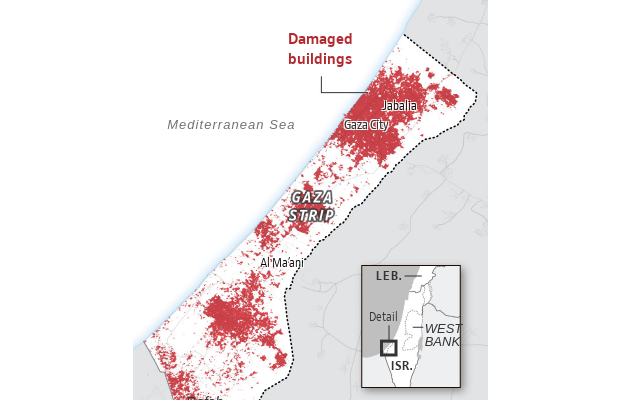
Mahira Hisham and her husband in Gaza City consume only tea and water some days so their children can eat more of the bread they make from a stinky mix of different flours and rabbit feed that is sold in the market. To put off hunger pangs, their teenage girls sleep until the sun starts to set and then swallow spoonfuls of ground thyme.
“Today, my son woke up and found nothing in the kitchen except for a lemon,” said Hisham, 36, who said the 10-year-old boy added some sugar and ate it. “He broke my heart.”
The north’s dreadful conditions are deepening Washington’s frustration with Israel and driving moves by countries, including the U.S., and aid groups to airdrop food to get around obstacles to ground delivery. But airdrops can only cover a fraction of the growing needs. Aid workers say they are expensive, logistically complex and small compared with truck convoys.
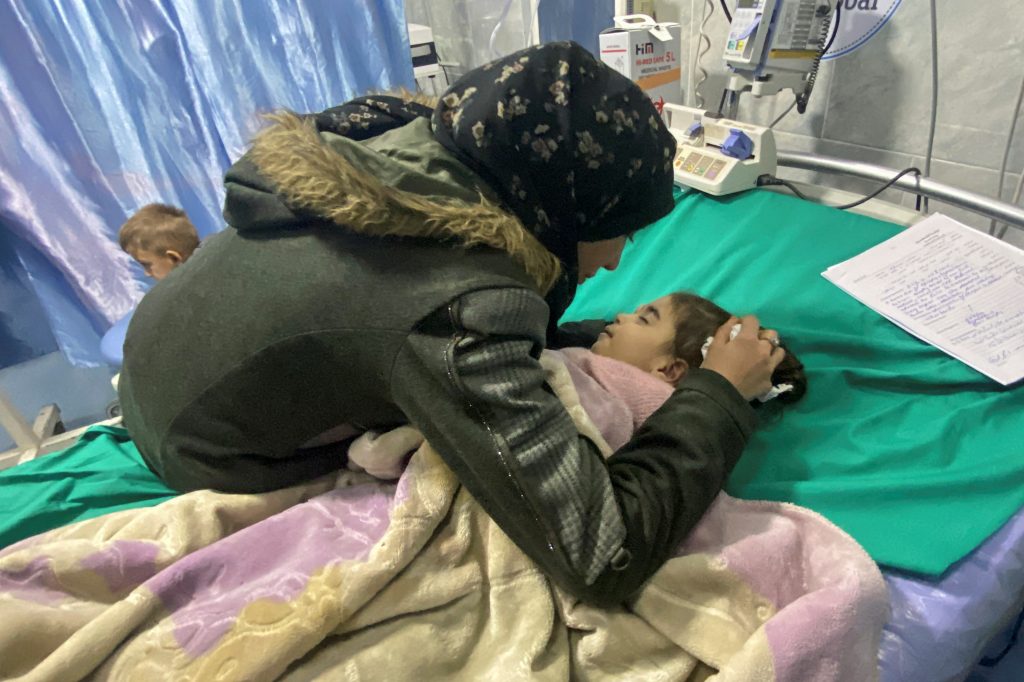
Palestinian mother Anwar Abdulnabi cries over the body of her daughter Mila, who had been suffering from deficiencies of calcium and potassium, at Kamal Adwan hospital on the edges of Beit Lahiya, in the northern Gaza Strip March 2, 2024. REUTERS/Osama Abu Rbaya
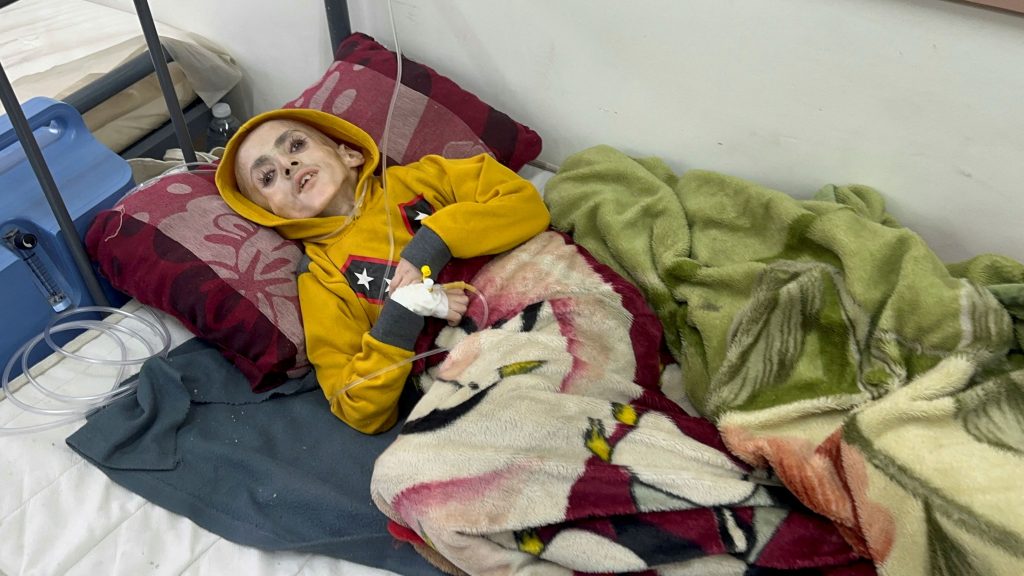
Palestinian boy Yazan Al-Kafarna, who had cerebral palsy and died later due to malnutrition, according to a Gaza doctor, lies on a bed at Al-Awda health centre amid a widespread hunger, as the conflict between Israel and Hamas continues, in Rafah in the southern Gaza Strip March 2, 2024. REUTERS/Yasser Qudih
On Thursday, President Biden said he had directed the U.S. military to build a temporary pier off the coast of Gaza for cargo ships to deliver aid. But the project will take time to scale up, and once ashore, aid could face the same challenges of safe distribution as truck convoys.
A senior administration official said Thursday that the White House was working with Israel to open a new ground crossing in northern Gaza, which an Israeli official said could open as soon as Friday. But it isn’t clear how much aid would enter or for how long. Only a massive and sustained surge can avert a looming famine, aid workers say.
Nearly all aid reaches Gaza via two entry points in the south. Very little of that aid has reached the north of the enclave since the war began in October.
Israel says it is doing everything it can to ensure aid reaches Gaza, and the north in particular. It says it doesn’t limit the amount of aid into the strip within permitted categories, and that it is approving the entry of more aid trucks than the United Nations and NGOs are able to distribute.
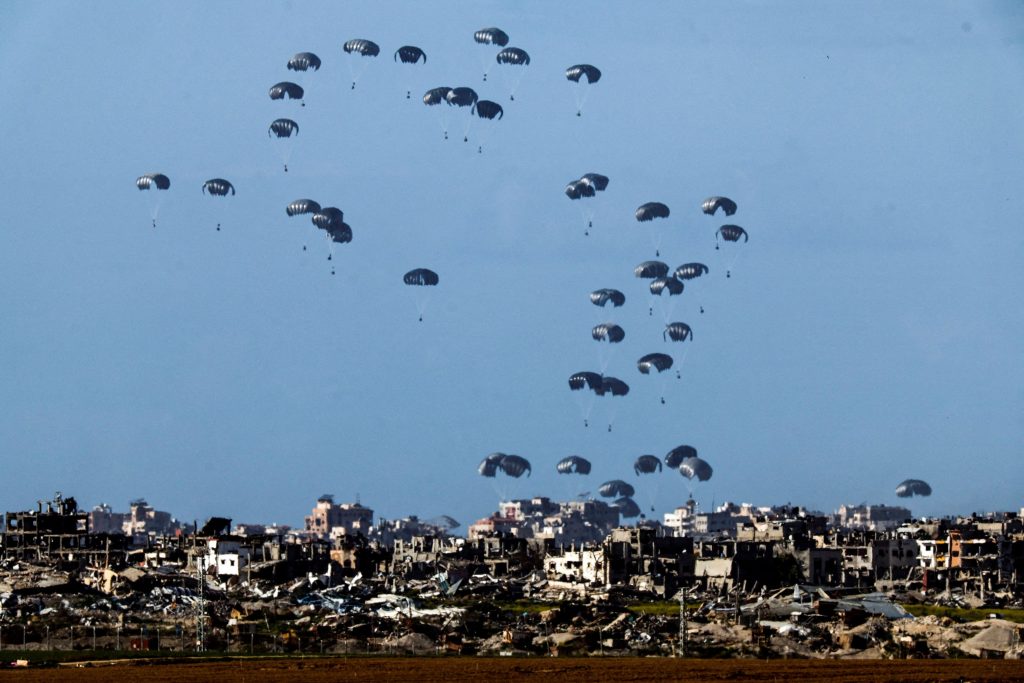
Packages fall towards northern Gaza, after being dropped from a military aircraft, amid the ongoing conflict between Israel and the Palestinian group Hamas, as seen from Israel’s border with Gaza in southern Israel March 7, 2024. REUTERS/Amir Cohen
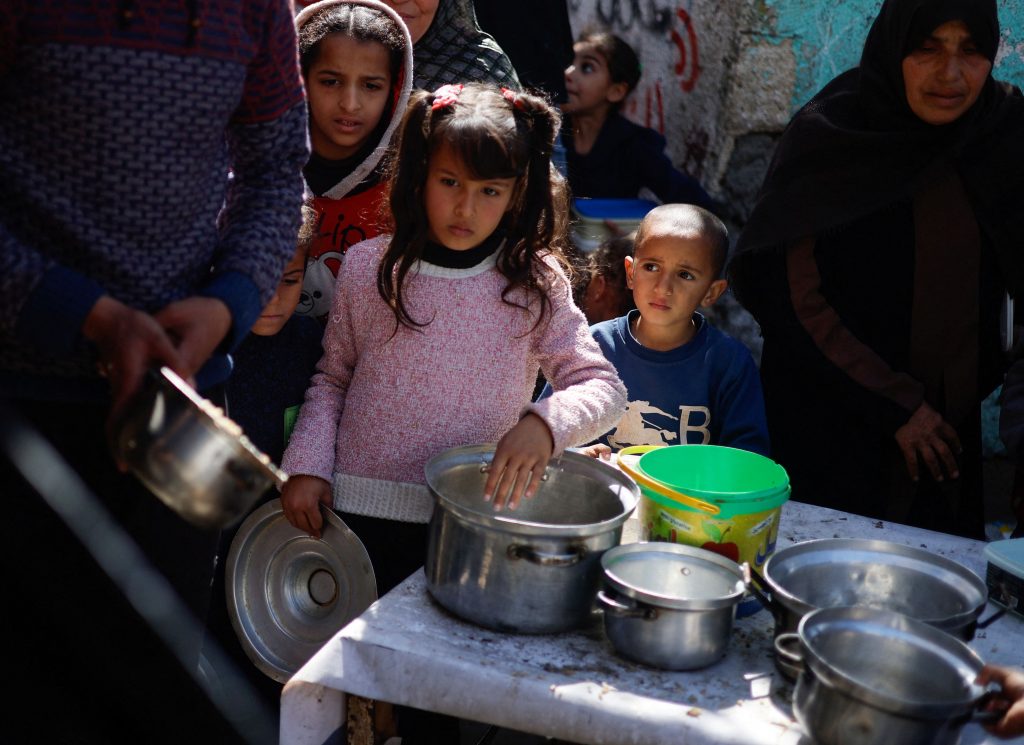
Palestinian children wait to receive food cooked by a charity kitchen amid shortages of food supplies, as the ongoing conflict between Israel and the Palestinian Islamist group Hamas continues, in Rafah, in the southern Gaza Strip, March 5, 2024. REUTERS/Mohammed Salem
Israeli officials have acknowledged that the lack of order in northern Gaza has impeded aid delivery there, and say that they are trying to help the U.N. to find ways to protect aid convoys, including through private contractors. Israel conducts strict inspections on everything that enters Gaza, allowing food, medicine, tents and drinking water while banning almost everything else out of concern that it could end up in the hands of Hamas.
Israel launched its war in Gaza after Hamas’s cross-border attack on Oct. 7 left 1,200 Israelis dead , most of them civilians. Israel’s ground-and-air offensive has left more than 30,000 Palestinians dead, mostly women and children, say Gaza health officials, who don’t distinguish between civilians and militants.
Gaza residents and aid workers say there is little visible Israeli presence in the north beyond a few checkpoints, and no visible presence of Hamas or Palestinian police.
In the past week, a handful of U.N. missions have made it to the north, mostly small convoys carrying medical supplies rather than food, which is most sought after more than five months into a war that has almost entirely cut the north off from the rest of the world.
Scott Anderson, a senior official with the U.N.’s agency for Palestinian refugees who recently returned from one of those missions, said food was the first thing everybody asked for. He saw hardly any food for sale in the market, except for a few lemons and green leafy vegetables.
“There is a way out: There needs to be access from the north, from Israel into the north, preferably more than one crossing point,” said Anderson.

Lately, an average of 120 trucks have been entering Gaza daily, compared with 500 before the war, of which 150 carried food.
Israel’s military, which controls access from the south to the north through two checkpoints, denied permission to more than half of U.N.-led aid missions to the north in January and early February on security grounds, according to the U.N. Office for the Coordination of Humanitarian Affairs.
The Palestine Red Crescent Society, the local affiliate of the International Committee of the Red Cross, said it hasn’t been allowed to deliver food or medical aid to the north since the end of a week-long cease-fire in late November.
U.N. agencies and charities suspended food-delivery missions to the north altogether on Feb. 5, when an aid convoy waiting near a checkpoint to access north Gaza was hit by Israeli navy fire. Israel said its forces were targeting Hamas infrastructure and that it would investigate the incident. Since then only the World Food Program has made ill-fated attempts to restart food convoys to the north.
The U.N.’s pullback and diplomatic pressure from the U.S. has forced Israel to become more deeply involved in getting aid into northern Gaza. Since late February, the Israeli military has overseen at least five food-delivery missions to the north involving some 100 trucks, most recently on Wednesday. One of those humanitarian operations turned deadly on Feb. 29, when more than 110 people were shot or trampled to death at a roundabout in Gaza City when Israeli forces fired at Palestinians who Israeli officials said were threatening troops. Palestinians said the people were only trying to get food.
Tuesday’s failed WFP effort unfolded just days after that deadly incident. Since then, the agency said two requests to reach north Gaza have been denied by the Israeli military.
Israel doesn’t want to provide end-to-end security for aid convoys within the Gaza Strip, said Shimon Freedman, a spokesman for the Israeli military agency responsible for facilitating assistance to Gaza. Instead, he said, Israel will usher convoys headed north through “humanitarian corridors” that are already secured by Israeli forces. Convoys would have to arrange their own security after leaving the corridors for deeper distribution into Gaza.
At their home in Gaza City, Hisham and her husband, Khamis Dawood, wake up early every morning and try to figure out how to feed their children. After surviving months of Israeli bombardment, the family considered evacuating to southern Gaza, where they would have ended up living in a tent in Rafah on the border with Egypt. But Israeli airstrikes in the south deterred them.
Dawood was at the deadly aid distribution on Feb. 29, trying to find food for his family when the bursts of machine-gun fire sent people running. He escaped from the area clutching three cans of beans. As he fled, Dawood saw a man carrying a sack of flour, his clothes covered in the blood of other Palestinians who had been killed beside him as they jostled for something to eat.
“I knew it was very dangerous to go there, but my four children are hungry,” said Dawood, who worked as a tailor before the war. He continues to search for aid convoys despite the growing risk of violence.
A few days ago, Hisham searched a neighbor’s yard after she thought she saw a parachute drop of humanitarian supplies fall there, but she found nothing. “I never imagined I would be knocking on doors to look for food for my children,” she said. “This is unbearable.”
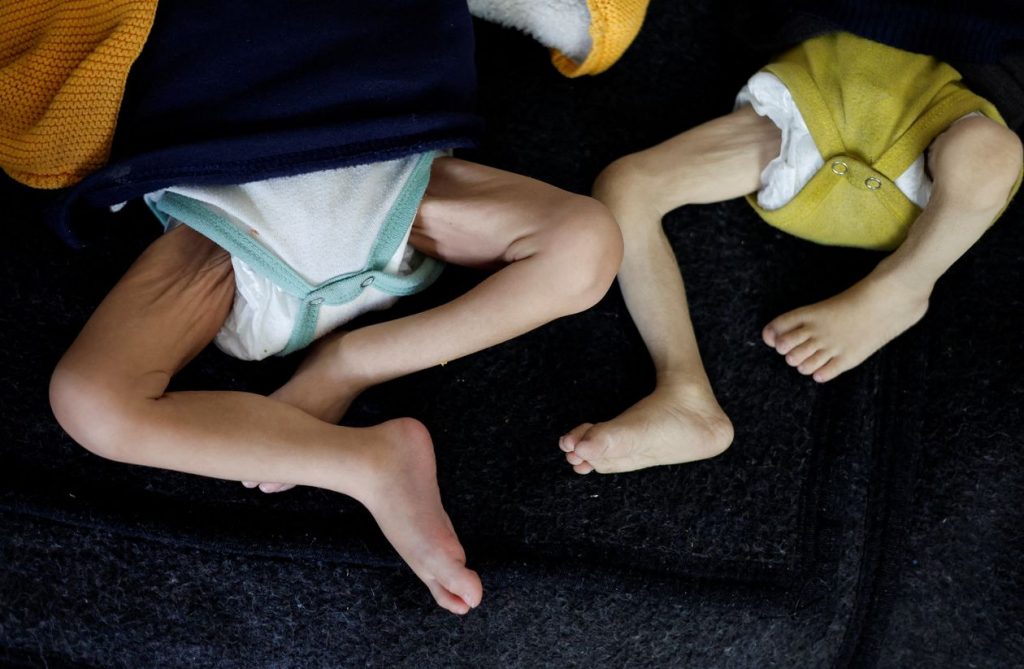
Palestinian children suffering from malnutrition received treatment at a healthcare center in Rafah, in the southern Gaza Strip, in March. PHOTO: MOHAMMED SALEM/REUTERS
Since last week, 20 children in Gaza’s north have died from starvation and dehydration, according to the Palestinian health ministry and doctors working at the few local hospitals still working. Hussam Abu Safiya, director of Kamal Adwan Hospital in Beit Lahia where 15 of those deaths occurred and 12 more emaciated children are being treated, said a lack of food, medicine and fuel has exacerbated their conditions.
The deaths of children from malnutrition and dehydration “should be an alarm like no other,” said Jens Laerke, a spokesman for the U.N. Office for the Coordination of Humanitarian Affairs. “If not now, when is the time to pull the stops, break the glass, flood Gaza with the aid that it needs?”
In northern Gaza, 16% of children under two are acutely malnourished, compared with 0.8% before the war and 5% of children in the southern border town of Rafah, where most displaced Gazans are sheltering , according to the WFP.
Infants are especially at risk, since breast-feeding mothers aren’t eating enough and formula milk is hard to get hold of, according to the U.N. Imad Dardona, a pediatrician at Kamal Adwan Hospital, said that with supplies limited, often the only way to treat them is with a solution of saline or sugar.
At a clinic in Deir al-Balah, more than a fifth of pregnant women treated in recent weeks were malnourished, according to Project Hope, the international NGO that operates the site. Medical staff say poor diets have led to a rise in anemia among pregnant women, which can threaten the lives of mothers and children .
Ahmed Dahir, head of the World Health Organization’s Gaza sub-office, returned from a recent visit to two partially functioning hospitals in the north caring for those most in need. On the way, desperate crowds searching for food surrounded the truck he was traveling in and only dispersed when they were convinced it contained only medical supplies.
“The route to the north is beyond words. Every time you think it cannot get worse, it does,” he said.
Write to Stephen Kalin at stephen.kalin@wsj.com and Margherita Stancati at margherita.stancati@wsj.com
